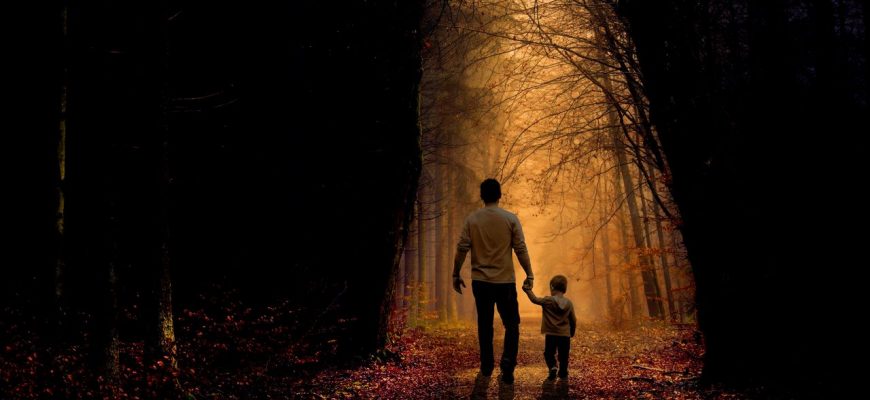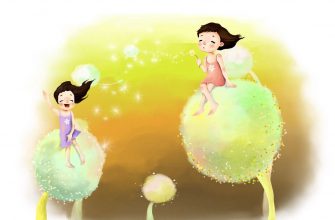The Houses of Parliament. Дома Парламента
The House of Parliament
The Houses of Parliament constitute perhaps the most popular and widely spread image of London, known and recognized throughout the whole world. In this famous palace are also many meeting halls and various parliamentary offices.
The Houses of Parliament can be visited by the public. The entrance is through the door located at the foot of Victoria Tower and next to the Royal Arch. Visitors start at the Royal Gallery and then go to the House of Lords. Here there is the historical Woolsack, where the Lord Chancellor takes his place to preside over the sittings. From here, visitors proceed towards the Central Corridor, crossing the Antechamber of the Lords. The historical frescos that decorate the walls of the Central Corridor are very interesting. Passing from here visitors arrive at the Antechamber of the Commons and then continue to the actual Commons itself.
At the end of the House of Commons is the Speaker’s Chair, on the right side of which the members of the parliamentary majority sit. The members of the groups that form the Opposition sit on the left, directly facing the Government benches.
Another interesting point in the Houses of Parliament is St. Stephen’s Hall, which is decorated with very valuable frescos. From St. Stephen’s Hall one reaches Westminster Hall. It is one of the oldest buildings in London.
Дома Парламента
Дома Парламента являются, пожалуй, самым популярным и широко распространенным символом Лондона, известным и признаным во всем мире. В этом знаменитом дворце множество залов для собраний и различных парламентских кабинетов.
Здания Парламента можно посещать общественности. Вход через дверь расположенную у подножия башни Виктория и рядом с Королевской аркой. Посетители начинают осмотр с Королевской галереи, а затем переходят в Палату лордов. Здесь есть исторический мешок с шерстью, где лорд-канцлер занимает место и председательствует на заседаниях. Отсюда посетители проходят в Центральный коридор, пересекая Прихожую Палаты лордов. Исторические фрески, украшающие стены Центрального коридора являются очень интересными. Проходя мимо Прихожей Палаты общин, посетители проходят в саму Палату общин.
В конце Палаты общин находится трон спикера, по правую сторону от которого сидят члены парламентского большинства. Члены групп, которые образуют оппозицию сидят слева, прямо напротив скамьи правительства.
Parliament. The Palace of Westminster.
Britain is administered from the Palace of Westminster in London. This is also known as the Houses of Parliament. Parliament is made up of two chambers — the House of Commons and the House of Lords.
The members of the House of Lords are not elected: they qualify to sit in the House because they are bishops of the Church of England, aristocrats who have inherited their seats from their fathers, people with titles. There has been talk of reform in this century because many Britons think that this system is undemocratic.
The House of Commons, by contrast, has 65 0 seats which are occupied by Members of Parliament (MPs) who are elected by the British public. The United Kingdom is divided into constituencies, each of which has an elected MP in the House of Commons.
Each of the major political parties appoints a representative (candidate) to compete for each seat. Smaller parties may have a candidate in only a few constituencies. There may be five or more parties, fighting for one seat, but only one person — the candidate who gets the greatest number of votes — can win.
Some parties win a lot of seats and some win very few, or none at all. The Queen, who is the Head of State, opens and closes Parliament. All new laws are debated (discussed) by MPs in the Commons, then debated in the Lords, and finally signed by the Queen.
All three are part of Parliament in Britain.
Парламент. Вестминстерский дворец.
Правительство Британии находится в Вестминстерском дворце в Лондоне. Вестминстерский дворец известен также как Дом парламента. Парламент состоит из двух палат — палаты общин и палаты лордов.
Членов палаты лордов не избирают: они являются членами парламента, потому что они — епископы английской церкви и аристократы, которые унаследовали свои места от отцов, титулованных особ. Идут разговоры о реформе этой системы в настоящем столетии, т. к. многие британцы не считают такую систему демократичной.
Палата общин, напротив, имеет 650 мест. Эти места занимаются членами парламента, избираемыми британским народом. Соединенное Королевство разделено на избирательные округа, каждый из которых имеет своего представителя (члена парламента) в палате общин.
Некоторые партии получают много мест, другие — совсем мало или вообще не получают. Королева, глава государства, открывает и закрывает парламент. Все законы обсуждаются членами палаты общин, затем — членами палаты лордов и, наконец, подписываются королевой.
Парламент в Британии составляют: королева, палата общин, палата лордов.
1. What is Parliament made up of?
2. Are the members of the House of Lords elected?
3. What do Britons think about this system?
4. Who appoints a representative to compete for each seat?
5. Who can win the seat?
6. Who is the Head of State?
Vocabulary:
to be made up of — состоять из
elected — избираемый
inherited — унаследованный
seat — место
constituency — избирательный округ
candidate — кандидат
vote — голосование, право голоса
The Houses of Parliament
The Houses of Parliament – Description:
The Houses of Parliament is also known as the Palace of Westminster and is the meeting place of the two houses of the Parliament of the United Kingdom – the House of Commons and the House of Lords – where members of Parliament and the Lords propose and debate new legislation.
After a fire in 1834 most of the existing building was demolished and rebuilt to a 1835 design by Charles Barry which was described by an architectural magazine of the day as “a quadrangular pile, with the principal front facing the Thames, and a tower in the middle”. Because of this orientation, the best view is from the far side of Westminster Bridge on the opposite bank of the river.
The Palace of Westminster has been a part of a UNESCO World Heritage Site since 1987.
The building is 3 storeys high and rectangular with the principal facade having a length of 266 metres. There are more than 1,100 rooms, 100 staircases and nearly three miles of corridor arranged around two series of courtyards. The building is orientated lengthways along the river which flows from south to north at this point. The style is Perpendicular Gothic and there any many towers and turrets arranged above the ornate facade.
The three main towers are: The 98.5 metre Victoria Tower which is in the south west corner of the palace over the Sovereign’s Entrance, The 96 metre Clock Tower (commonly known as Big Ben) at the north end and the 91 metre octagonal Central Tower which stands over the middle of the building immediately over the entrance lobby.
The Houses of Parliament – Visiting:
Visitors should use St Stephen’s Entrance in the middle of the building’s western front. Guided tours take visitors into both the Commons and Lords chambers and the historic Westminster Hall, it is best to book in advance. Visitors can attend debates in both Houses and watch committee hearings. The guided tour takes about 75 minutes and includes the Commons and Lords Chambers, the Queen’s Robing Room, the Royal Gallery and Westminster Hall.
Tours are available on Saturdays and during summer 2012 from 27th July to 1st September Monday to Saturday. Times are normally 9.15am – 4.30pm, but on Wednesday 15th, 22nd and 29th August, tours will be running from 1.15pm – 4.30pm.
Prices: Adult: £15, Child (5-15 years) £6, Child (under 5): Free admission.
The Houses of Parliament – History:
St Edward the Confessor built a royal palace on what was then an island site at about the same time that he built Westminster Abbey (1045-50), and the island and surrounding area soon became known as Westminster. The Palace of Westminster was the monarch’s main residence until fire destroyed most of it in 1512. After that it served as the home of Parliament and almost all subsequent Parliaments have met there.
In 1834 fire destroyed almost every part of the rebuilt Houses of Parliament leaving only Westminster Hall, the detached Jewel Tower and the Undercroft Chapel, Cloisters and Chapter House of St Stephen’s standing. Immediately after the fire, King William IV offered Buckingham Palace to Parliament hoping to dispose of a building that he disliked, but his offer was declined.
In 1836 Charles Barry’s proposal for rebuilding the Palace was chosen out of 97 entries. The New Palace was to be much larger than its predecessor and the design incorporated the remains of the Old Palace (with the exception of the Jewel Tower). The design involved reclamation of a significant amount of land from the Thames to enable the building of the principal facade. Construction started in 1840 and was completed in the late 1850s.
In the Second World War the Palace of Westminster was hit by bombs on 14 occasions. One night in 1941 incendiary bombs set alight the chamber of the House of Commons and the roof of Westminster Hall. Fire fighters managed to save Westminster Hall but the chamber was destroyed. The Commons Chamber was rebuilt after the war under architect Sir Giles Gilbert Scott and was completed in 1950.
The Houses of Parliament – The Towers:
The largest tower of the Palace of Westminster is the Victoria Tower which occupies the south west corner of the building. It stands 98.5 metres above the Sovereign’s Entrance which is used by the monarch when entering the building for the State Opening of Parliament and other formal occasions. On the roof of the tower is a 22 metre flagstaff from which flies the Royal Standard (the monarch’s personal flag) when the Sovereign is present in the Palace. On the days when either House of Parliament is sitting the Union Flag flies from the mast. Victoria Tower was called the king’s tower until it was renamed Victoria Tower in Victoria’s diamond jubilee year.
Slightly shorter than the Victoria Tower is the Clock Tower which stands at the northern end of the building and has a height of 96 metres,. It houses the Great Clock of Westminster which strikes the hour to within a second of the time. The time is shown on four dials which are lit from behind at night. The dials are 7 metres in diameter, the hour hand is 2.7 metres long and the minute hand 4.3 metres long. The Clock Tower is commonly (but incorrectly) called Big Ben after the large bell which strikes the hour, this bell in turn is only nicknamed Big Ben – its official name is The Great Bell of Westminster. The bell has developed a crack which contributes to its distinctive sound. In the top of the Clock Tower is the Aytron Light which is lit when either House of Parliament is sitting after dark. It was installed at the request of Queen Victoria so that she could see from Buckingham Palace whether the members were “at work”. The tower has recently been renamed the Elizabeth Tower to reflect Queen Elizabeth’s diamond jubilee.
The shortest of the Palace’s three principal towers is the octagonal Central Tower which is 91 metres high and stands over the the middle of the building above the Central Lobby. It was designed as a great central chimney to draw air out of the building.
The Jewel Tower is located opposite Parliament and is one of the two surviving sections of the medieval Palace of Westminster. The Tower was built by Edward III between 1365 and 1366 on land appropriated from Westminster Abbey and was located on the edge of the private gardens at the south west corner of the Palace. The three-storey building was intended to serve as a storeroom for the king’s private collection of jewels, gold and silver. Nowadays the Crown Jewels are on display at the Tower of London. The Jewel Tower is managed by English Heritage and contains exhibitions relating to the history of Parliament and the history of the Jewel Tower.
The Jewel Tower is open:
Every day from 1 April – 4 November 2012
10:00-17:00
Saturdays and Sundays from 5 November – 28 March 2013
10:00-16:00
The Houses of Parliament – Entrances:
The Houses of Parliament have separate entrances for different users of the building:
The monarch enters the building using the Sovereign’s Entrance beneath a 15 metre high decorated archway at the base of the Victoria Tower. This leads to the starting point of the royal procession route which is a suite of ceremonial rooms used by the monarch at the State Opening of Parliament.
Members of the House of Lords use the Peers’ Entrance in the southern section of the west façade of the building. The entrance is covered with a stone carriage porch and opens to an entrance hall with a staircase beyond which leads up towards the chamber.
Members of Parliament enter the building through the Members’ Entrance in the northern part of the west façade.
Members of the public enter the building through the St Stephen’s Entrance in the middle of the building’s western front. Visitors walk through a series of hallways and flights of stairs which bring them to the octagonal Central Lobby which is the hub of the Palace. The hall is flanked by corridors which lead to ante-rooms and debating chambers. To the north is the Members’ Lobby and Commons Chamber, and to the south is the Peers’ Lobby and Peers’ Chamber.
The Houses of Parliament – Westminster Hall:
Westminster Hall is the oldest surviving building on the site. The hammerbeam roof dates from 1399 and has been described as “the greatest creation of medieval timber architecture”. The Hall itself is much older having been completed in 1099. The roof allowed what had originally been three aisles to be replaced with a single huge internal space. The hall has been used for a range of purposes including important trials such as those of Sir Thomas Moore (1535), Guy Fawkes (1606) and King Charles I (1649).
The Houses of Parliament – The Debating Chambers:
The debating chambers are so small that seating in the House of Commons can only accommodate 427 of the 650 elected Members of Parliament with the rest having to stand. The layout of the chambers reflects the fact that parliament formerly met in a chapel and the seating is arranged like choir stalls in parallel rows.
The Peers’ Chamber is located in the southern part of the palace and measures 14 metres by 24 metres. The benches in the chamber as well as other furnishings in the Lords’ side of the Palace are coloured red. The upper part of the chamber is decorated with stained glass windows.
The Commons Chamber is located in the northern part of the palace and measures 14 metres by 21 metres. The benches in this chamber and other furnishings on the Commons side of the Palace are coloured green. The Speaker’s Chair occupies the north end of the chamber. On the floor of the chamber are two red lines 2.5 metres apart and protocol dictates that members must not cross the lines when speaking. According to tradition, the lines are intended to be just over two swords lengths apart and intended to prevent arguments degenerating into duels. However members have never been allowed to bring swords into the Chamber and in the days that gentlemen carried swords there were no lines.
The Houses of Parliament – The State Opening of Parliament:
Following a general election and before each new session of Parliament in the autumn the monarch travels to the Palace of Westminster from Buckingham Palace in the Irish State Coach for the State Opening of Parliament. The Imperial State Crown, which is worn by the monarch for the ceremony, as well as the Cap of Maintenance and the Sword of State which are carried by the monarch during the ceremony also travel to the Palace by carriage. The Queen, having entered the Palace by the Sovereign’s Entrance presides over the event from the House of Lords – no monarch has been admitted to the Commons since Charles I caused a civil war by forcing his way in and trying to arrest 5 MPs. He was subsequently executed for treason as an “implacable enemy to the Commonwealth of England”.
The Houses of Parliament – Website:
The Houses of Parliament – Getting There:
Address: Palace of Westminster SW1A 0AA
Nearest Underground Stations: Westminster (3 minute walk), St James’s Park (9 minute walk)
(click on station names to find other places to visit nearby)
Презентация на тему The Houses of Parliament
специалист в области арт-терапии
Описание презентации по отдельным слайдам:
Britain is administered from the Palace of Westminster in London. This is also known as the Houses of Parliament. Parliament is made up of two chambers — the House of Commons and the House of Lords.
The House of Commons is the democratically elected house of the UK Parliament, responsible for making laws and checking the work of Government. The House of Lords makes laws, holds the Government to account, investigates policy issues and provides a forum of independent expertise.
The Houses of Parliament constitute perhaps the most popular and widely spread image of London. In this famous palace are also many meeting halls and various parliamentary offices.
The Houses of Parliament can be visited by the public. The entrance is through the door located at the foot of Victoria Tower and next to the Royal Arch.
Victoria Tower is the tallest (98.5m) square tower at the south-western end of the Palace. Now it is home to the Parliamentary Archives. Millions of government documents are kept here. A flag flies on the tower when Parliament is sitting during the day.
Visitors start at the Royal Gallery and then go to the House of Lords.
Here there is the historical Woolsack, where the Lord Chancellor takes his place to preside over the sittings.
From here, visitors proceed towards the Central Corridor, crossing the Antechamber of the Lords.
Passing from here visitors arrive at the Antechamber of the Commons and then continue to the actual Commons itself.
Westminster Hall, the oldest existing part of the Palace of Westminster, was erected in 1097. The Hall has a huge wooden roof decorated with carved angels. If has been used for Royal banquets and State trials.
On the highest tower there is the largest clock in the country which is known to the whole world as Big Ben. One can hear Big Ben strike every quarter of an hour. The clock «Big Ben» came into service in 1859. Big Ben is the biggest clock bell in Britain.
There are a number of small gardens surrounding the Palace of Westminster. Victoria Tower Gardens with Buxton Memorial Fountain is open as a public park along the side of the river south of the palace.
Black Rod’s Garden (named after the office of Gentleman Usher of the Black Rod) is closed to the public and is used as a private entrance.
Old Palace Yard, with bronze stature of Richard I, is paved over and covered in concrete security blocks. A square of grass opposite is often used by television journalists to interview Members of Parliament.
New Palace Yard (on the north side) and Speaker’s Green (directly north of the Palace) are all private and closed to the public.
Another interesting point in the Houses of Parliament is St. Stephen’s Hall, which is decorated with very valuable frescos. From St. Stephen’s Hall one reaches Westminster Hall. It is one of the oldest buildings in London.
Номер материала: ДБ-1478482
Не нашли то что искали?
Вам будут интересны эти курсы:
Оставьте свой комментарий
На ПМЭФ-2021 презентовали программу стратегического академического лидерства вузов страны
Время чтения: 2 минуты
Минздрав разрешит исследования «Спутника V» на детях с 12 лет
Время чтения: 1 минута
Треть россиян за полгода не прочли ни одной книги
Время чтения: 1 минута
Итальянский учитель дал детям задание на лето и прославился
Время чтения: 4 минуты
Рособрнадзор: почти половина учителей не дотягивает до базового уровня подготовки
Время чтения: 2 минуты
Более 80% студентов при выборе работы на первое место ставят зарплату
Время чтения: 1 минута
Подарочные сертификаты
Ответственность за разрешение любых спорных моментов, касающихся самих материалов и их содержания, берут на себя пользователи, разместившие материал на сайте. Однако администрация сайта готова оказать всяческую поддержку в решении любых вопросов, связанных с работой и содержанием сайта. Если Вы заметили, что на данном сайте незаконно используются материалы, сообщите об этом администрации сайта через форму обратной связи.
Все материалы, размещенные на сайте, созданы авторами сайта либо размещены пользователями сайта и представлены на сайте исключительно для ознакомления. Авторские права на материалы принадлежат их законным авторам. Частичное или полное копирование материалов сайта без письменного разрешения администрации сайта запрещено! Мнение администрации может не совпадать с точкой зрения авторов.
Houses of Parliament
The Houses of Parliament, otherwise known as The Palace of Westminster, stands on the site where Edward the Confessor had the original palace built in the first half of the 11th century. In 1547 the royal residence was moved to Whitehall Palace, but the Lords continued to meet at Westminster, while the commons met in St. Stephen’s Chapel. Ever since these early times, the Palace of Westminster has been home to the English Parliament.
In 1834 a fire broke out which destroyed much of the old palace, all that remained was the chapel crypt, The Jewel Tower and Westminster Hall. It was Lord Melbourne, the Prime Minister, who saved the great hall by arranging for the fire engines to be
Click Photo for Slideshow
brought right into the hall and personally supervising the fire fighting operation.
Entrance to Westminster Hall is permitted only as part of a guided tour, otherwise it can be viewed from St. Stephen’s porch above. The hall measuring 240 feet by 60 feet has an impressive hammerbeam roof of oak and is one of the most imposing medieval halls in Europe. In this noble setting coronation banquets were held until 1821. It was used as England’s highest court of law until the nineteenth century and it was here that Guy Fawkes was tried for attempting to blow up the House of Lords on 5th November 1605. The statue of Oliver Cromwell, which stands outside the hall, reminds us it was here in 1653 that he was sworn in as Lord Protector.The route to the upper and lower houses takes you through the huge wooden doors into St. Stephen’s hall. The vaulted ceiling and murals were designed by Barry to replicate the medieval chapel where the commons met until 1834. From here
Click Photo for Slideshow
you are ushered into the well known octagonal Central Lobby, whose tiled walls are inscribed with Latin mottos. This is the central meeting place where constituents can meet or «lobby» their Members of Parliament. It is from here that you will be shown your direction either to the House of Lords or Commons.
House of Commons
An incendiary bomb destroyed the House of Commons in 1941. A reconstruction of Barry’s original design for the house, taken from St. Stephen’s chapel, the commons old meeting place, was completed in 1950. The seating arrangement in the house is reminiscent of choir stalls, the members of the cabinet sit on the front benches while opposition senior members sit directly opposite. The distance between the benches marked out on the floor in red lines, is exactly two sword lengths and one foot apart. Members are not allowed to cross these lines, thus ensuring that debates are kept orderly. In the centre of the floor stands the Table of the House, on which the mace is placed at the start of each parliamentary sitting; this is the Speaker’s sceptre. The speaker of the house presides over sittings, keeping order.
House of Lords
The House of Lords decorated in scarlet and gold has all the grandeur one would expect in this chamber. This is where Her Majesty the Queen comes to open Parliament each November. Placed beneath a regal canopy, the gold throne which dominates the house is where the Queen sits to deliver the traditional opening speech. The Lord Chancellor sits opposite, on the famous Woolsack, this is a large scarlet cushion filled with wool, a tradition dating back to the middle ages when wool was England’s largest export.






















